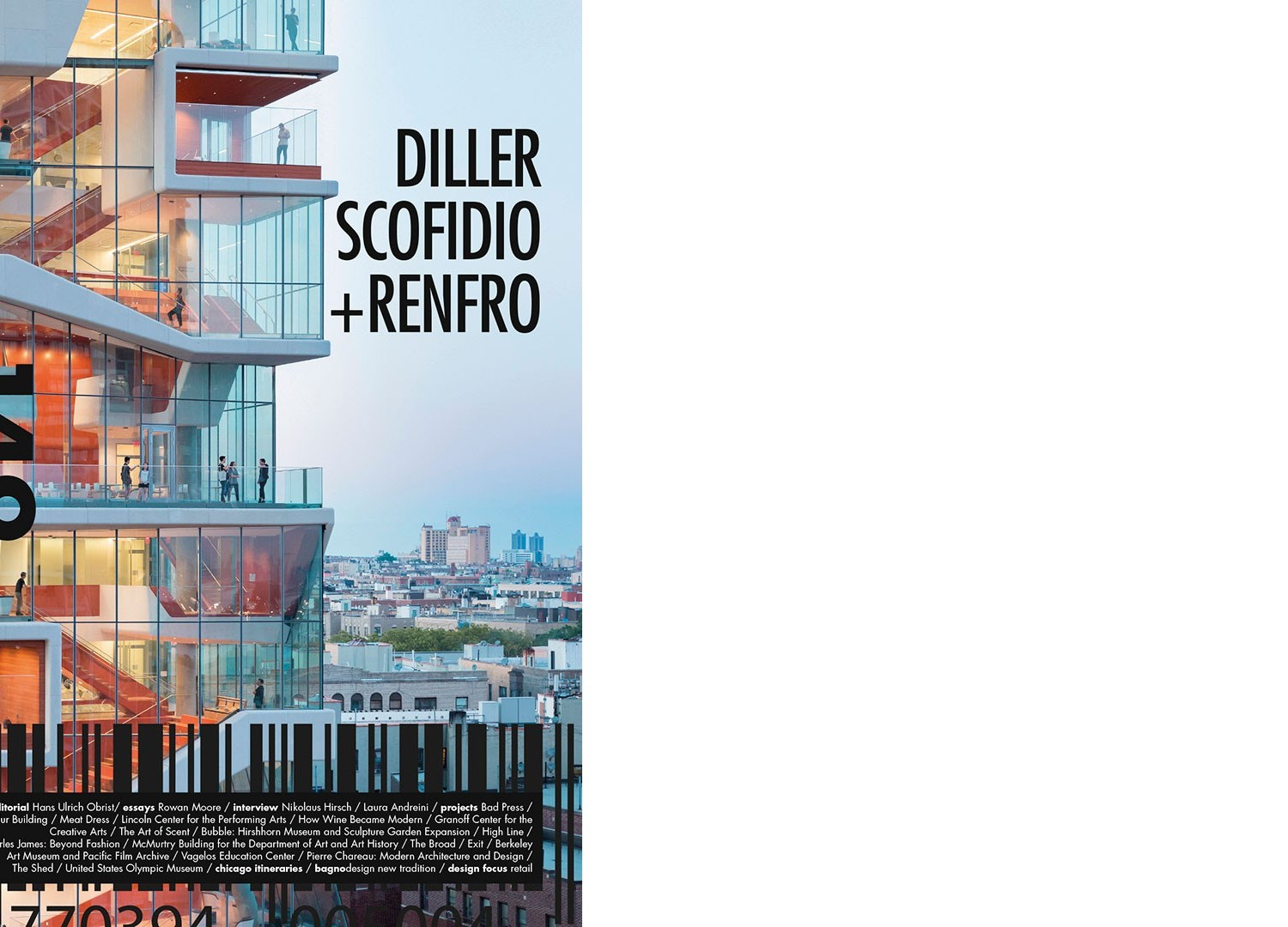
International magazine of architecture and project design november/dicember 2015
A part worth the whole
Any written presentation should give the reader a broad, descriptive vision of the topic in question, especially in the case of a monograph devoted to one or more authors, albeit referring to a common work; it would be necessary to introduce the theme through a horizontal critical observation, capable of outlining the general characteristics of an act expressed over the years and through works. However, every rule has its own exceptions, and never as in the case of the work of the New York studio Diller and Scofidio + Renfro, is a part, in this case a project, worth the whole; in other words, to explain the whole corpus of a such an intense and complex career as that of the 2 to 3 to 4 hundred American architects and artists united in thought, criticism, in work and in life. The work in question is of course the New York’s famed High Line the famous elevated linear park that has transformed an ancient transport infrastructure into a genuine cult object. And when the work of an architectural studio has the ability to change in a single “horizontal” gesture, the destiny and the quality of life of millions of people, then we need to start observing “vertically”, that is, more specifically the value of that work in the certainty that this project alone is sufficient to explain and convey the value of a critical and operational path that has “given” the world a vision so new and original to become the symbol of redemption of an entire discipline. In fact, it is a work so simple and incisive that it resolves, in terms of architecture, what conventional thinking has recognized and exalted in the thirty years prior, as the star system, the spectacle of the project, the interdependence from show business, the completely mistaken conception that the project could relate more with the values in terms of the object and therefore design rather than with the intrinsic meaning of the architectural work as part of a whole that is the city, architecture as an urban fact, as an interpretation of a built or natural environment whatever it may be. The High Line is a work of restoration, of urban renewal, a piece of land art, an attentive research on the design of detail, on the art of shaping and using nature, a place of passage/ promenade and hence of leisure, an opportunity to reflect on social and technological decay, ultimately architecture in the contemporary and accomplished sense of the word. Where the High-Line passes, real estate values have soared, buildings have started to change their façades and be restored and looked after. On that iron deck, now a garden, people come together and spend their free time. What was dark and dirty has become clean, limpid and bright; what was artificial, natural; what was foreclosed, granted; what was impossible, possible. The very idea of monument has changed and perhaps it is no coincidence that this happened precisely in New York, where Central Park, the true landmark of the city, finds a new ally in the affirmation of the city as the place of collective human activities. Evidently, “Born in the U.S.A!”, as the lyrics of a proud Bruce Springsteen go, means to access, even unconsciously, those communicative and intuitive values that are the basis for marketing, the genesis of social networks, the global success of art as an instrument of communication. Or the “Yes We Can!” of a retired president can be used as a slogan to say that the contemporary generates resources and the city energy in order to continue to accommodate life, make it pleasant and at the same time verify that any urban context is able to develop antibodies to correct the “distortions” of a megalopolis where you can walk to the lilting rhythm of traffic lights. The High-Line is also the confirmation that there are works that exceed the disciplinary boundary of architecture to open up other reflections and other worlds. This is the extraordinary contribution made by the studio DS + R, and a work, a work alone, without taking anything away from an extraordinary critical and operational path embarked upon over forty years ago, believe me, is worth all the works ever created.
Marco Casamonti
Download cover
Download table of contents
Download introduction of Marco Casamonti


